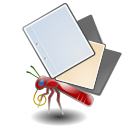Submitted by version1cards on
Category:
Description:
There are 20 standard amino acids, and it's worthwhile for biochemistry students and protein researchers to memorize some raw facts about them. This deck contains three sub-categories: Notation, Groups and Properties.
Notation is written in the 3-card style normally used for language decks, with the vice-versa copying already applied. This means:
20 cards show the full amino acid name as the question, with 3-letter and 1-letter codes as the answer for each.
Another 20 cards show just the 1-letter code as the question, with the full name and 3-letter code as the answer.
Groups mean Aliphatic, Aromatic, etc. There is some vice-versa work here, too:
Each group name is a question, and the answer is the list of amino acids in that group.
Each list of amino acids is given as a question, and the answer is the group they belong to.
Each amino acid is named individually as a question, and the answer is the group that amino acid belongs to.
Side-chain Properties covered here are polarity and acidity, with the same layout as in Groups.
Structures show the atomic structure of the amino acids. To use these cards, copy the "images/" folder included in AminoAcids.zip into your ~/.mnemosyne directory (or equivalent).
Credit for Structure cards and images: Kamil Slowikowski, September 2011. (Thanks, Kamil!)
Source:
This information is freely available on Wikipedia.
Mnemosyne Compatibility:
- 2.1+

1 Comment
card input question
Submitted by sweetfax on
Hi,
I copied the /images folder into C:\Program Files (x86)\Mnemosyne, but mnemosyne doesnt seem to be seeing the cards. If I attempt to open the xml or any other file with mnemosyne, it says that mnemosyne requires .db files. Anyone get this working on Windows?